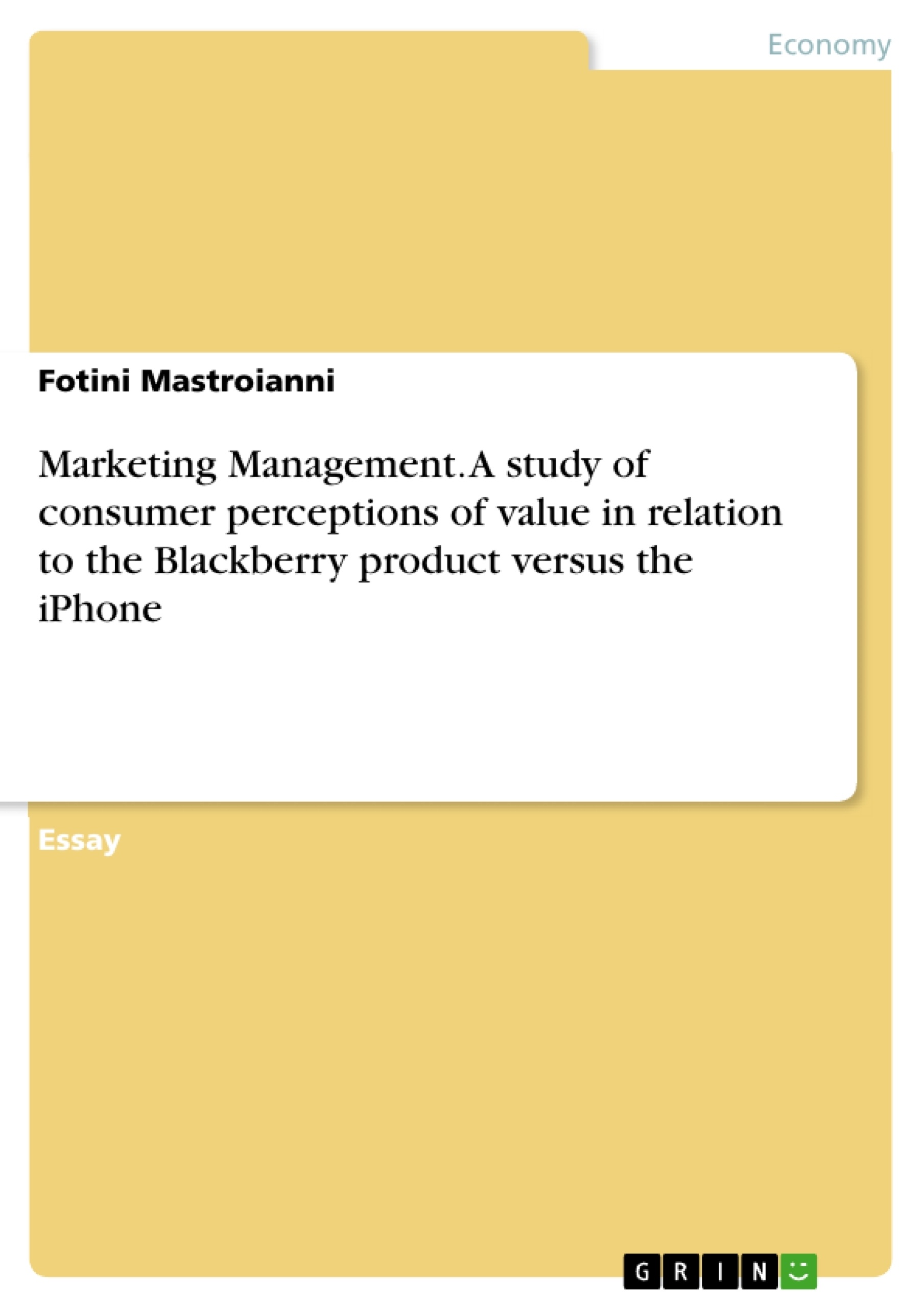The aim of this assignment is to examine the theme of customer perceived by value and its marketing implications for how organisations become and remain competitive.
The essay is using two leading products which operate in the mobile phone industry. These are Research in Motion (RIM) and Apple and their retrospective products: a) the Blackberry and b) the iPhone. Both companies have a strong branding position in the market. They seek to create value through the manipulation of technology and in offering features that are of satisfaction to the customers.
Inhaltsverzeichnis (Table of Contents)
- Introduction
- Theories of Customer Value
- Current Value Proposition of Blackberry
- Extrinsic and Intrinsic Features
- Apple's value proposition
- The synergy between features within single devices
- Cost and Design
- New value proposition for RIM
- Mission
- Objectives
- Market Strategy
- Marketing Programmes
- Internal knowledge capabilities
- Creating potential for differentiation
- Allocating the necessary budget to achieve milestones
- The implementation stage
- Internal implementation of the value proposition
- External implementation of the value proposition
- Conclusion
Zielsetzung und Themenschwerpunkte (Objectives and Key Themes)
This assignment aims to examine the concept of customer perceived value and its implications for how organizations achieve and maintain competitiveness in the mobile phone industry. The paper uses Blackberry (Research in Motion) and Apple, with their respective products, the Blackberry and iPhone, as case studies. The goal is to understand how these companies leverage technology and features to create perceived value for customers.
- Customer perceived value
- Value proposition of Blackberry and iPhone
- Comparative analysis of features and design
- Influence of cost and technology on customer perceptions
- Developing a new value proposition for Blackberry
Zusammenfassung der Kapitel (Chapter Summaries)
- Introduction: The paper sets the context by highlighting the importance of customer perceived value and its relevance in achieving competitive advantage. It introduces Blackberry and Apple, and their respective products, as case studies to explore how they create value through technology and features.
- Theories of Customer Value: This section defines customer perceived value and explains how it is calculated by dividing perceived benefits by perceived costs. It explores various theories of customer value and how consumers make decisions based on perceived benefits and costs.
- Current Value Proposition of Blackberry: This chapter analyzes Blackberry's value proposition, arguing that its competitive cost structure and range of technological features make it an attractive option for customers. It discusses the importance of quality and design in competing with other leading brands.
- Apple's value proposition: This chapter compares and contrasts Blackberry's value proposition with that of Apple's iPhone. It explores the differences between the products and how their features create perceptions of value for customers. The chapter highlights the strength of Apple's value proposition, emphasizing the synergy between its product features and how they create a cohesive user experience.
- New value proposition for RIM: This chapter proposes a new value proposition for Blackberry, focusing on a competitive cost structure while retaining its core features. It suggests that Blackberry can enhance its appeal by tailoring features to different consumer groups and targeting specific market segments. The chapter outlines the implementation of the new value proposition, considering both internal and external factors.
Schlüsselwörter (Keywords)
This assignment focuses on the key concepts of customer perceived value, value proposition, competitive advantage, technology, features, cost, design, Blackberry, iPhone, Research in Motion (RIM), Apple, and consumer behavior.
- Quote paper
- Fotini Mastroianni (Author), 2013, Marketing Management. A study of consumer perceptions of value in relation to the Blackberry product versus the iPhone, Munich, GRIN Verlag, https://www.grin.com/document/346295




